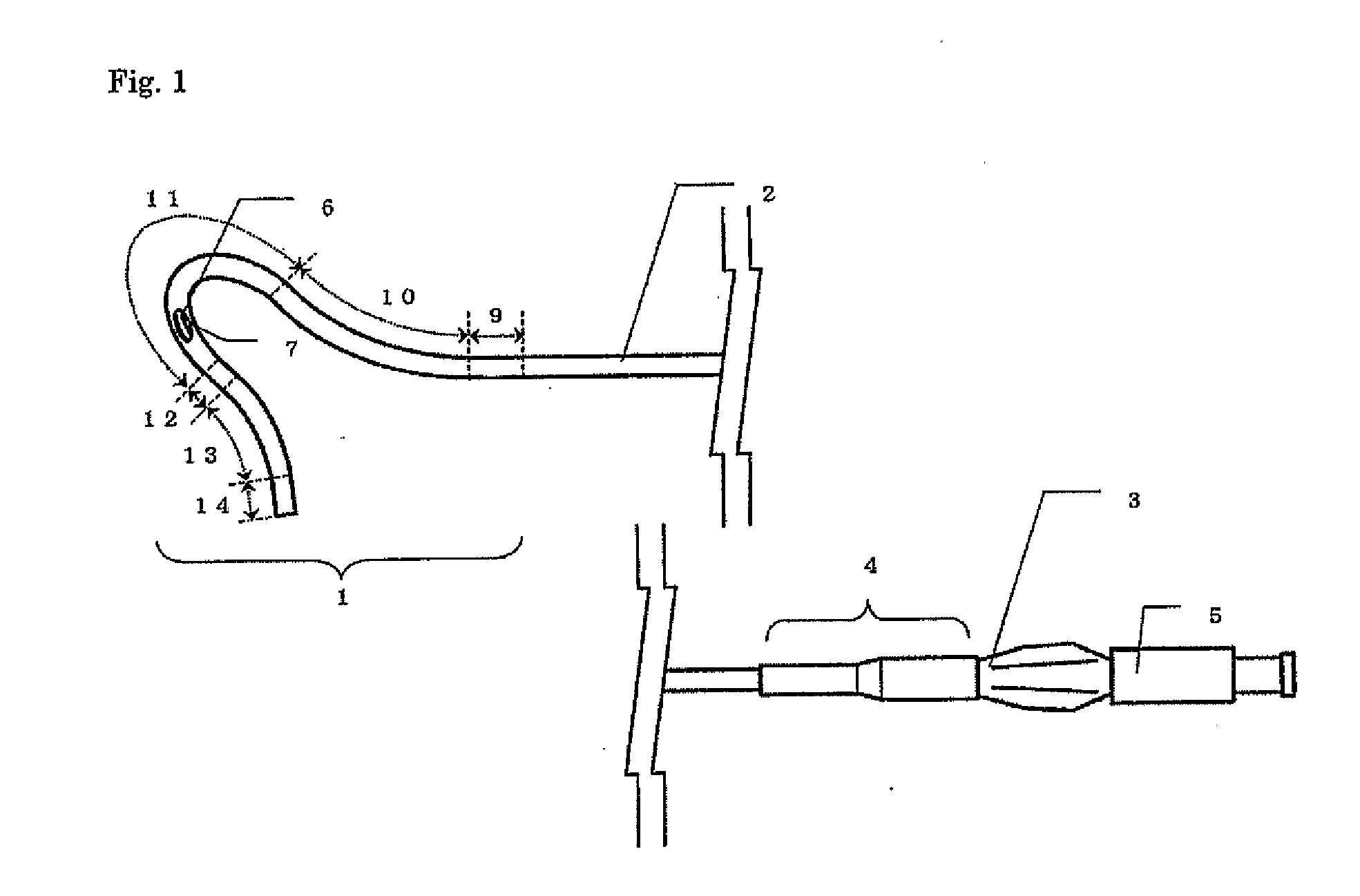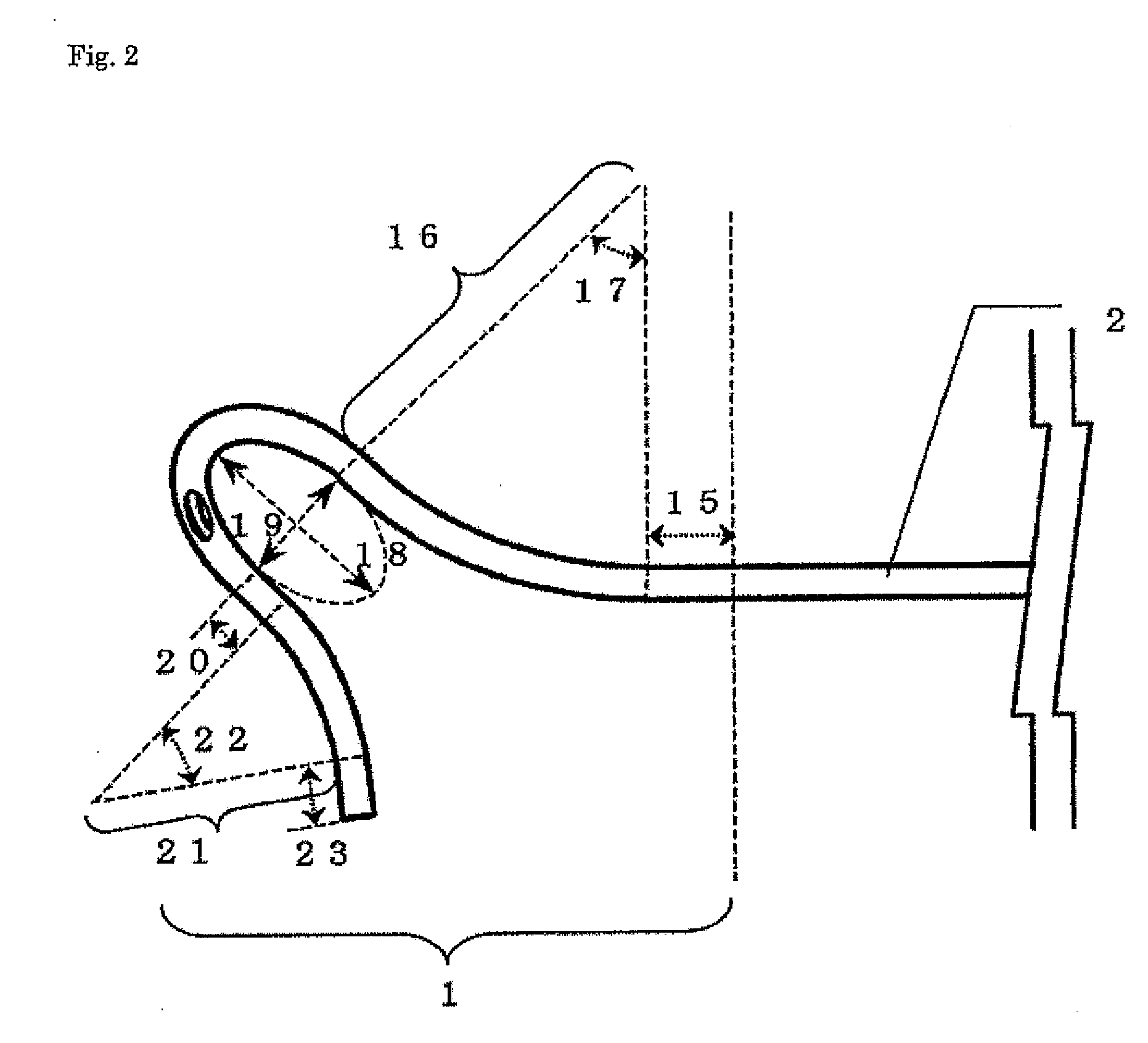Catheter for Blood Removal
a catheter and blood technology, applied in the direction of catheters, etc., can solve the problems of increasing the frequency of imaging, affecting the operation of the catheter, so as to prevent renal dysfunction, remove the blood out of the body without excessive elongation of the operational period, and be extremely resistant to adverse effects
- Summary
- Abstract
- Description
- Claims
- Application Information
AI Technical Summary
Benefits of technology
Problems solved by technology
Method used
Image
Examples
example 1
[0113]A composite tube having an external diameter of 2.67 mm, an inner diameter of 2.26 mm, and a length of 900 mm was prepared by using a metal braid of metal wires of 0.10 mm×0.03 mm prepared from SUS 304 WPB alloy (16 wires / braid). An internal layer of a polytetrafluoroethylene (Polyflon F-207, DAMKIN INDUSTRIES. LTD) and an external layer of a polyamide elastomer (PEBAX6333 SA01 (Shore hardness: 63D), ATOFINA) was formed by switched extrusion, to give a proximal shaft.
[0114]A polyamide elastomer (PEBAX4033 SA01 (Shore hardness: 40D), ATOFINA) and barium sulfate were extruded biaxially into pellets. The barium sulfate content in the pellet was 40 wt %. A tube having an external diameter of 2.60 mm, an internal diameter of 1.85 mm, and a length of 300 mm was prepared by extrusion molding by using the pellets thus prepared. The tube prepared was placed in the grooves (width and depth: 3.1 mm) on a SUS304 alloy plate: one for the first straight region having a length L1 of 10 mm, c...
example 2
[0116]A blood removal catheter was prepared in a similar manner to Example 1, except that L1 was changed to 50 mm, R1 to 70 mm, θ1 to 40°, A1 to 15 mm, B1 to 11 mm, L2 to 15 mm, R2 to 25 mm, θ2 to 50°, and L3 to 10 mm, and a circular opening having a diameter of 1.8 mm was formed.
example 3
[0117]A blood removal catheter was prepared in a similar manner to Example 1, except that the external diameter of the composite tube was changed to 3.33 mm, the internal diameter to 2.72 mm, the tube external diameter to 3.00 mm, and the internal diameter to 2.25 mm, L1 was changed to 100 mm, R1 to 60 mm, 01 to 50°, A1 to 15 mm, B1 to 11 mm, L2 to 5 mm, R2 to 20 mm, θ2 to 30°, and L3 to 5 mm, and a round polytetrafluoroethylene rod (external diameter: 2.20 mm) was inserted into the tube lumen during molding.
PUM
 Login to View More
Login to View More Abstract
Description
Claims
Application Information
 Login to View More
Login to View More - R&D
- Intellectual Property
- Life Sciences
- Materials
- Tech Scout
- Unparalleled Data Quality
- Higher Quality Content
- 60% Fewer Hallucinations
Browse by: Latest US Patents, China's latest patents, Technical Efficacy Thesaurus, Application Domain, Technology Topic, Popular Technical Reports.
© 2025 PatSnap. All rights reserved.Legal|Privacy policy|Modern Slavery Act Transparency Statement|Sitemap|About US| Contact US: help@patsnap.com



